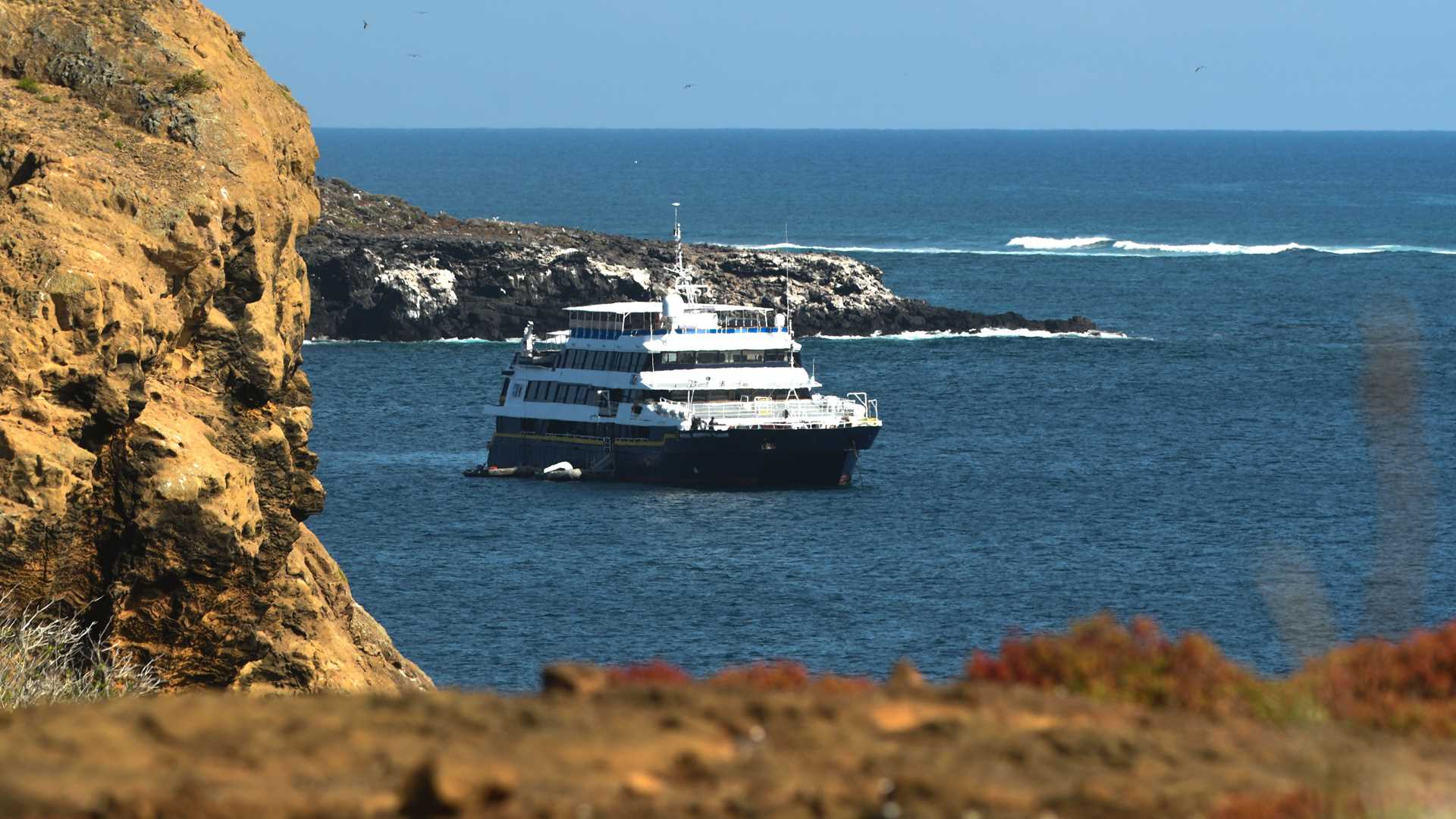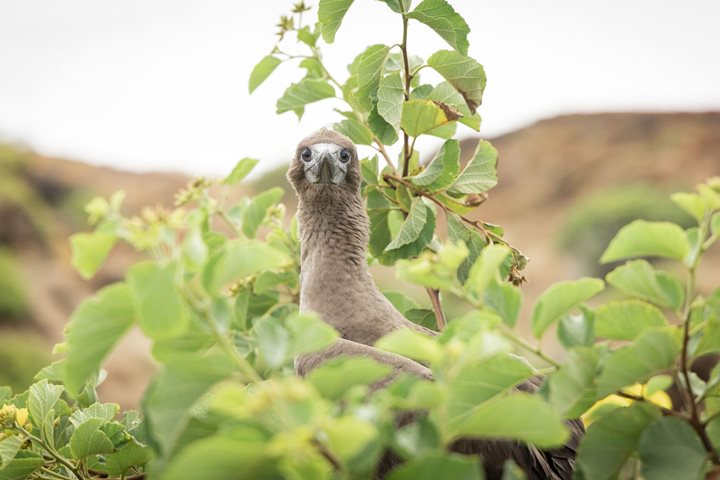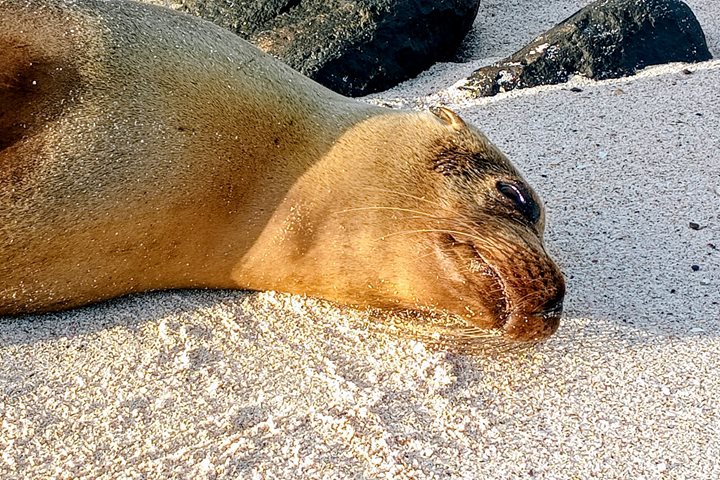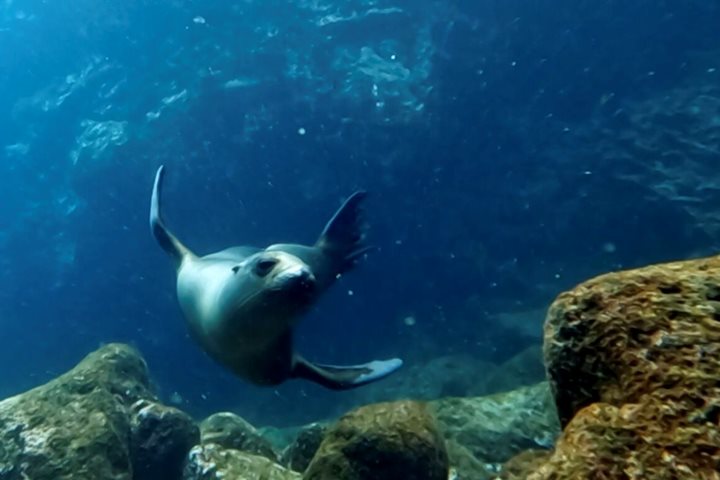Today was our last full day in the Galapagos, and we visited one of the archipelago’s oldest islands, San Cristobal. In the morning, we visited the easternmost point of the Galapagos, Punta Pitt. This is the only visitors’ site where all three species of boobies are present – the blue, the red and the Nazca.
As we hiked along the trail, we encountered blue-footed booby nests on the ground and red-footed booby nests in the bushes. Red-footed boobies are the only species of booby that nests on trees here in the Galapagos Islands. The morning ended with beautiful snorkeling in crystal clear water and playful sea lions.
The day ended with a visit to Cerro Brujo, a breathtaking white sand beach that is home to several colonies of sea lions. As we walked the beach and swam in that clear water, we thought about the magic of the Galapagos Islands. How special it is that we get to share it with the world!







